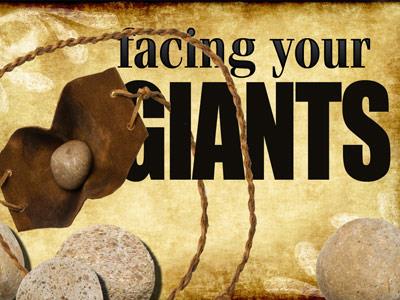-
The Son Of David Series
Contributed by Freddy Fritz on Mar 4, 2023 (message contributor)
Summary: In Matthew 1:1-17, we learn that Matthew calls Jesus "the son of David" because Jesus fulfills God's promise of a future king who establishes God's kingdom on earth.
Introduction
Michelangelo was a famous painter and sculptor. His most famous sculpture is “David,” which resides in the city of Florence in Italy. Michelangelo’s David is 17 feet tall.
It's entirely possible that Michelangelo never meant for people to be able to look at David’s face head-on. Viewing him from below, as almost everyone does, David appears to have a calm expression on his face.
But when one looks at David face-to-face, he has an expression of concern, or maybe anger. That is because he is about to do battle with Goliath in the most famous underdog story of all time.
It seems that many artists and sculptors place hidden images in their works. You would never know it unless someone pointed it out to you. For example, the “Mona Lisa” by Leonardo da Vinci is one of the most famous paintings of all time. Not long ago, members of Italy’s National Committee for Cultural Heritage reported that—when viewed under a microscope—the letters “L” and “V” are visible in one of her eyes. There are some other less-decipherable letters in there as well. Could it be that Leonardo da Vinci signed his name in one of her eyes in microscopically small letters?
It seems to me that this is what Matthew was doing in the opening verses of his Gospel. In his genealogy of Jesus, Matthew referred to Jesus as “the son of David.” Matthew was showing that there is a portrait of the royal Messiah that the people were longing for, but that there was a hidden message within it. Jesus was not the Messiah that the people expected. But Jesus was the Messiah that God intended to send them all along.
Matthew began his Gospel with these words, “The book of the genealogy of Jesus Christ.” The Greek word for “Christ” (Christos) means “anointed” or “an anointed one.” It is the equivalent of the Old Testament Hebrew word “Messiah,” which means the same thing.
In modern Bible translations, “Messiah” is often used when the term functions as a title (that is, the Messiah), and “Christ” is used when the term functions as a name (that is, Jesus Christ).
One commentator points out, “Matthew here states at the outset what he will develop and demonstrate through his Gospel, that Jesus was the expected Messiah, of the royal line of David, with the rightful claim to the title ‘King of the Jews’ ” (Christopher J. H. Wright, Knowing Jesus through the Old Testament [Downers Grove, IL: IVP Academic, 1992], 5).
In today’s lesson, we are going to see that Jesus, “the son of David,” is the Messiah who is the King of the Jews.
Scripture
Let’s read Matthew 1:1-17:
1 The book of the genealogy of Jesus Christ, the son of David, the son of Abraham.
2 Abraham was the father of Isaac, and Isaac the father of Jacob, and Jacob the father of Judah and his brothers, 3 and Judah the father of Perez and Zerah by Tamar, and Perez the father of Hezron, and Hezron the father of Ram, 4 and Ram the father of Amminadab, and Amminadab the father of Nahshon, and Nahshon the father of Salmon, 5 and Salmon the father of Boaz by Rahab, and Boaz the father of Obed by Ruth, and Obed the father of Jesse, 6 and Jesse the father of David the king.
And David was the father of Solomon by the wife of Uriah, 7 and Solomon the father of Rehoboam, and Rehoboam the father of Abijah, and Abijah the father of Asaph, 8 and Asaph the father of Jehoshaphat, and Jehoshaphat the father of Joram, and Joram the father of Uzziah, 9 and Uzziah the father of Jotham, and Jotham the father of Ahaz, and Ahaz the father of Hezekiah, 10 and Hezekiah the father of Manasseh, and Manasseh the father of Amos, and Amos the father of Josiah, 11 and Josiah the father of Jechoniah and his brothers, at the time of the deportation to Babylon.
12 And after the deportation to Babylon: Jechoniah was the father of Shealtiel, and Shealtiel the father of Zerubbabel, 13 and Zerubbabel the father of Abiud, and Abiud the father of Eliakim, and Eliakim the father of Azor, 14 and Azor the father of Zadok, and Zadok the father of Achim, and Achim the father of Eliud, 15 and Eliud the father of Eleazar, and Eleazar the father of Matthan, and Matthan the father of Jacob, 16 and Jacob the father of Joseph the husband of Mary, of whom Jesus was born, who is called Christ.
17 So all the generations from Abraham to David were fourteen generations, and from David to the deportation to Babylon fourteen generations, and from the deportation to Babylon to the Christ fourteen generations.
Lesson
In Matthew 1:1-17, we learn that Matthew calls Jesus "the son of David" because Jesus fulfills God's promise of a future king who establishes God's kingdom on earth.

 Sermon Central
Sermon Central



